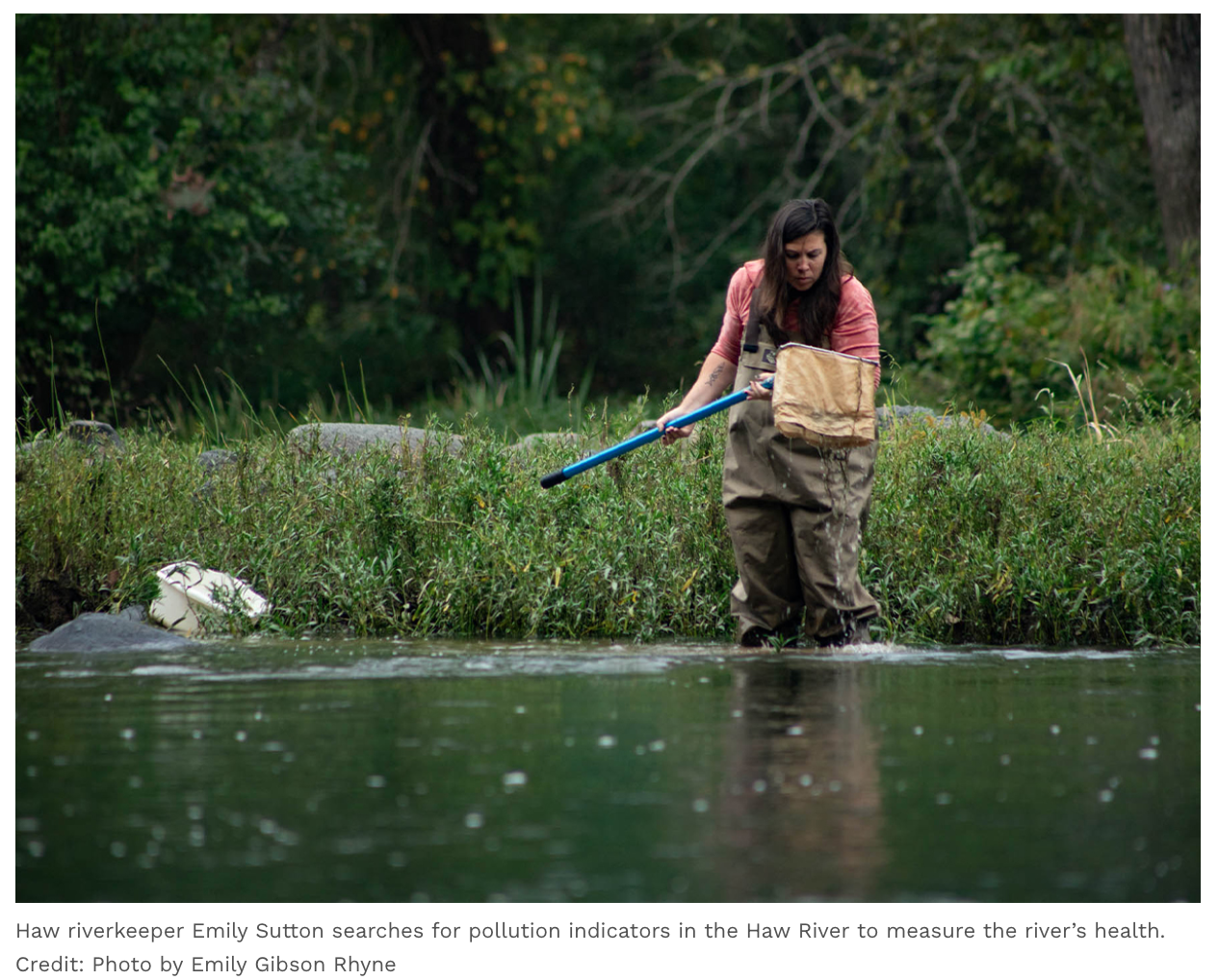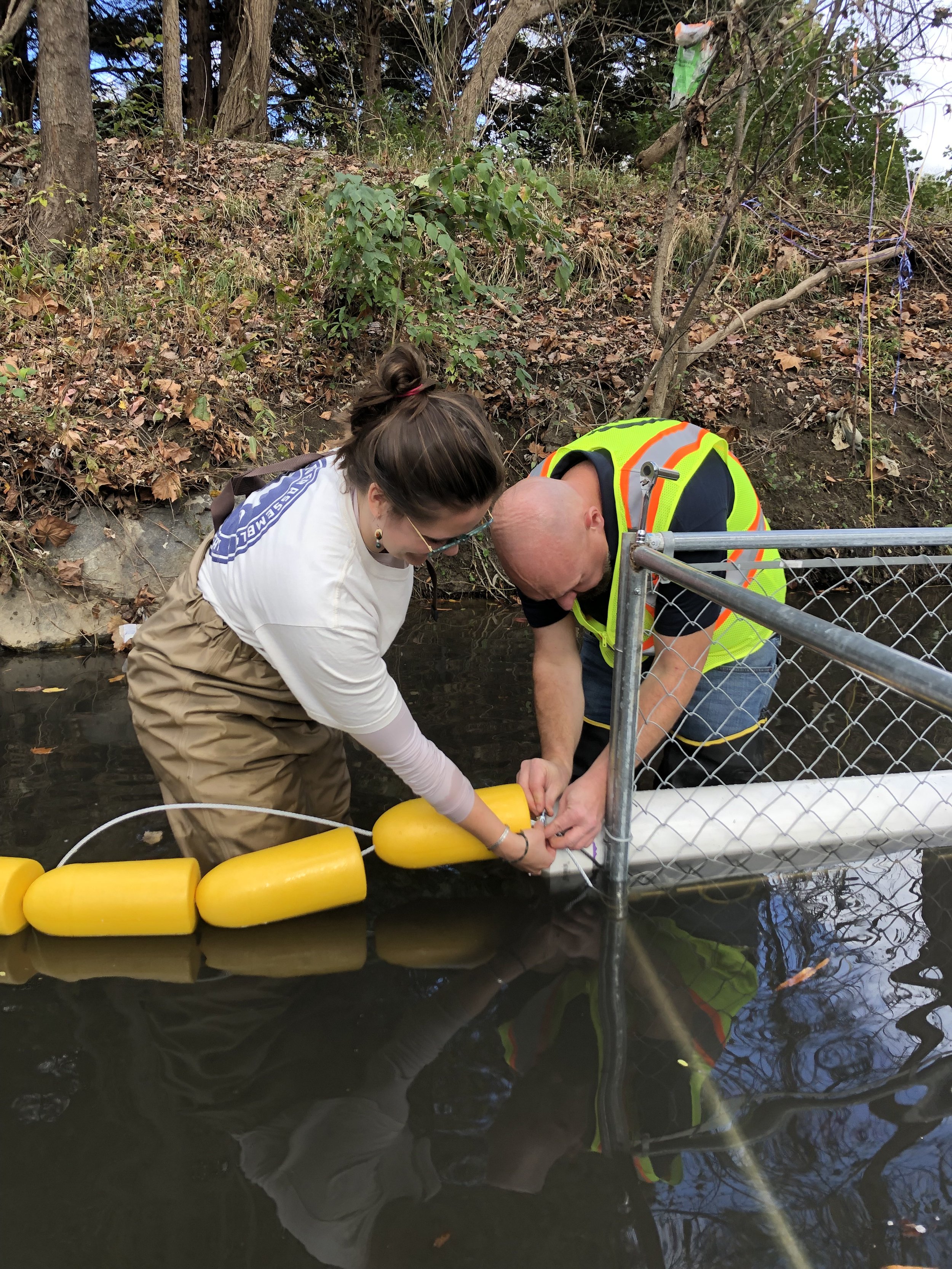
begins with you
A healthy Haw River
Flood Resources: Tropical Storm Chantal
To Test Your Well: Instructions if you have picked up a well testing kit from Haw River Assembly:
Dear Haw River Assembly Community,
The Haw River has faced a significant flooding event in the aftermath of Tropical Storm Chantal. Our neighbors have suffered devastating loss of life, businesses and homes have been inundated by feet of water and rescues have been carried out at shopping centers, bridges and apartment complexes. More than 30,000 residents have been without power.
Early estimates indicate this was a one-in-one-thousand-year event. Our team will work to assess impacts, but it is still too early to know the full extent. Our priority is addressing immediate needs of our staff and families and our hearts go out to everyone impacted by this tragic flooding. Climate change is driving these catastrophic and devastating storms, and we will keep pushing our lawmakers and communities to act on climate change to protect against the next big storm.
Haw River Assembly will be setting up Free Well Water Testing sites on Thursday in Orange and Alamance and on Friday in Chatham County. See below.
As your neighbors and fellow watershed stewards, we will do our best to provide information and mobilize our collective response during this challenging time. Stay safe out there.
Your team at Haw River Assembly,
Emily, Carolyn, Hannah, Kaitlyn, Jessica, Aidan and Anita
A collapse on Lamont Norwood Road in Chatham County, via Frank Cuicchi. (via Chapelboro)
Haw River Assembly - defending the haw since 1982
Signup for our weekly e-newsletter
Our watershed includes 920 miles of streams feeding into the Haw along 110 miles of the river, 14,000 acres of Jordan Lake and the plants, animals and people who depend on the river. We work as advocates to stop pollution with our Haw Riverkeeper and we are building a watershed community that supports clean water through our outreach, education and water quality monitoring programs.
Swim Guide results
June 27 - 29: ALL SITES PASS!
2025 Summer Swim Guide!
If you’re not a member of Haw River Assembly, now is a great time to join! Throughout Memorial day through Labor day we’re testing the waters for our Swim Guide Program! We monitor popular swimming and recreation access points along the Haw River for E.coli bacteria.
Join Haw River Assembly and support our weekly, Summer water testing program at popular swimming holes, ensuring YOU know where it's safe to swim! Just $200 funds a week of E.coli testing at ten, local recreation spots. Dive in as a member today and be a H2O hero for everyone's splashy summer adventures!
“Swim Guide delivers free, up-to-date water quality information for over 10,000 beaches, lakes, rivers and swimming holes around the world in Canada, the U.S., Mexico, the Bahamas, Costa Rica, Ireland, France, Denmark, New Zealand, Australia, and Kenya.” -SwimGuide.org
What does MPN mean? MPN (Most Probable Number) measures E. coli concentration in recreational waters, with the EPA setting a “beach action value” of 200 MPN for safety. However, North Carolina uses a 126 MPN threshold and we use this guideline and indicate failing beaches in red and passing ones in green. Numbers above 126 MPN, such as 2419 in Glencoe this week, indicate unsafe water, so it's advised to stay out. Passing beaches may not be safe to swim as the bacteria makes its way downstream. Do NOT swim in flood waters!
What’s happening this month?
Conservation & Restoration
-
Local teams conducting seasonal surveys of creeks and act are guardians against pollution threats.
-
We provide training, materials and tools for volunteers to properly identify and report sediment and erosion control violations. An initiative to reduce stormwater runoff from construction sites.
-
Volunteers help maintain HRA Trash traps by regularly removing collected litter, preventing pollution from reaching our waterways.
-
Communities come together in March to clean up trash, raising awareness about the impact of consumption habits on the river and local creeks.
-
Volunteers help stabilize river and stream banks by planting native species to prevent erosion.
Environmental Education
-
The Haw River Learning Celebration is a field trip to the Haw River for fourth graders each fall where they learn about the river!
-
Students engage in hands-on stream exploration, analyzing water quality through physical and visual tests, assessing macroinvertebrate biodiversity and learning about their school's water sources and impact on local ecosystems.
-
Haw River Assembly team delves into current data and pressing issues affecting the river's health, as well as provide actions to protect our river.
-
Stream Splashers is an engaging and educational outdoor program for children ages 2 to 6 and their accompanying adults. Through songs, crafts, and interactive nature-based activities, participants will explore and connect with the Haw River in a fun and hands-on way.
advocacy & Community Building
-
Haw River Assembly volunteers join our Haw Riverkeeper to lobby for important bills directly impacting districts in the watershed.
-
Workshops and events meant to uplift our BIPOC, historically marginalized community members, providing safe and fun outdoor recreation opportunities.
-
An annual celebration in May featuring live music, food trucks, river activities and various community education events aimed at promoting the preservation and enjoyment of the Haw River and its surrounding environment.
-
Every year, members gather to reflect on the work of HRA, vote for new board members and enjoy the company of other fellow river lovers.
-
April 26, 1-5pm @ The Plant in Pittsboro, NC: LEARN MORE
Join us April 26 for a family-friendly celebration of environmental action! Connect and enjoy live music, interactive climate demonstrations, fun activities, a special PBS documentary screening and expert panel discussion. **For a limited time, we are still accepting environmentally-friendly and climate-minded vendors! Get in touch with our Climate Fair organizer, Hannah McFarland, if you or someone you know is interested! HEMCFARL@uncg.edu
Our 2024 Impacts!

Haw River Assembly is a 501(c)(3) non-profit. we were founded in 1982 to restore and protect the haw river and jordan lake.
We are building a watershed community to support that effort. There are eight counties that are part of the Haw River watershed: Guilford, Rockingham, Caswell, Alamance, Orange, Chatham, Durham and western Wake.
our mission
Our mission is to promote environmental awareness, conservation and pollution prevention; to speak as a voice for the river in the public arena; and to put into peoples’ hands the tools and the knowledge they need to be effective guardians of the river. Our Haw Riverkeeper advocates for clean water and against threats to the river.
The Haw River Assembly is dedicated to the goal of environmental justice and equality for all people in our watershed. The Haw River Assembly is a stronger organization and our work to protect water is more successful when our organization represents the full diversity of people living in our watershed. We believe all people should have access to enjoyment of the natural world and a voice in decisions that may affect their environment and/or health. No group of people should bear a disproportionate share of negative environmental consequences resulting from industrial activities or governmental policies that situate polluting activities in their community.












